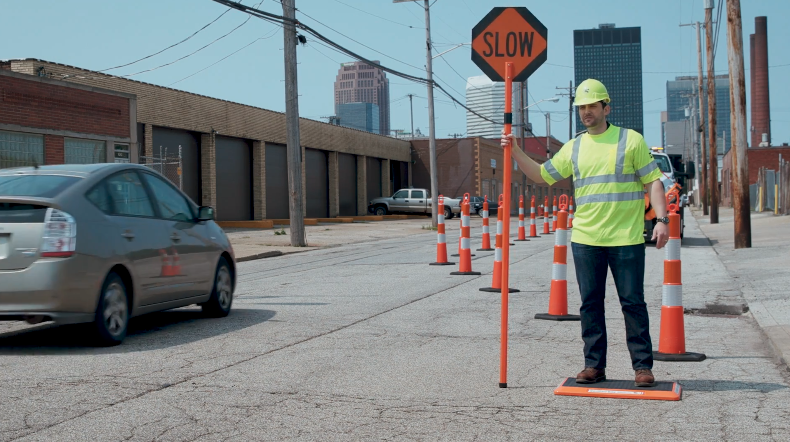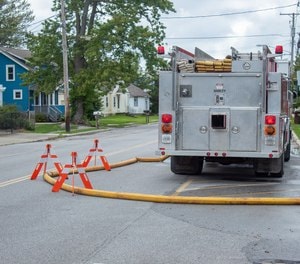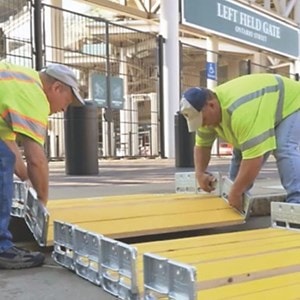Memorandum on the Highway Safety Improvement Program
A new guidance on the eligibility and use of Federal-aid funds with the Highway Safety Improvement Program (HSIP) was released on February 2, 2022. The goal of the program is to reduce the number of roadway fatalities and serious injuries on all public roadways and highways.
Memorandum on the Highway Safety Improvement Program
On February 2, 2022, the Federal Highway Administration (FHWA) Associate Administrator, Cheryl J. Walker, released new guidance on the eligibility and use of Federal-aid funds with the Highway Safety Improvement Program (HSIP). The goal of the program is to achieve a substantial decline in roadway fatalities and serious injuries on all public roadways. This guidance replaces the February 26, 2016 HSIP Program Eligibility Guidance.
The FHWA is committed to working towards a roadway system with zero deaths or serious injuries and is working directly with the States to encourage the investment of HSIP funds into safety. We are witnessing a crisis as the rate of highway fatalities per 100 million vehicle miles traveled has not improved over the past ten years and significantly increased in 2020. This memorandum is an attempt to inform the state agencies on the availability and application of federal funds to reverse this preventable development. The purpose of the Safe System approach is to protect all road users regardless of whether they are walking, biking, driving, taking public transit or any other form of transportation.

In order to access HSIP funds, States must have a strategic highway safety plan (SHSP) which is a comprehensive framework to analyze highway safety issues and opportunities to implement new safety measures to reduce roadway accidents. The SHSP must be evaluated on a regular basis to acquire accurate data that guides investment decisions towards strategies and countermeasures with the most potential to save lives and prevent injuries. They are dedicated to working with state agencies to keep HSIP funds available and translate the importance of this funding mechanism as a critical tool in the safety toolbox. The FHWA also encourages the use of other Federal-aid highway funds for safety-related investments as part of system-wide replacement projects, where eligible.
Safety should be viewed with a holistic approach that considers environmental analysis, construction, project design, maintenance and operations when making investment decisions. All decisions should be driven by data based on crash experience, crash potential and crash rate for all potential road users. Demographic information must also be considered to ensure that underserved communities’ needs are taken into account.
The framework for identifying and analyzing highway safety should be as follows:
- Problem Identification
- Countermeasure Identification
- Project Prioritization and Implementation
- Evaluation
If States fail to meet or make progress towards their annual safety performance targets, they must comply with set provisions the following fiscal year. The FHWA will work directly with that state to develop strategies to meet future safety targets.

Specified safety projects are outside of the infrastructure solutions that the HSIP is targeting, but the Bipartisan Infrastructure Law (BIL) allows States to spend up to 10 percent of their HSIP funds on these projects. Projects can include education surrounding public safety matters, facilitating the enforcement of traffic safety laws, infrastructure that supports emergency services and conducting research that evaluates experimental safety countermeasures.
This memorandum details a roster of proven safety countermeasures that can be funded by HSIP funds:
- Speed management
- Roadway departure
- Intersections
- Bicycle/Pedestrians
- Crosscutting
In general, 90 percent of the highway safety improvement projects funded through HSIP are covered by the Federal government. States can maximize their HSIP funds by focusing on certain types of safety investments. Certain safety projects such as roundabout, pavement markings, centerline and shoulder rumble strips and stripes can have 100 percent of their costs Federally funded.
When delivering on highway safety improvement projects, States need to streamline the process and complete the projects in a timely manner so that the full extent of their benefits can be realized.
However, with the increased implementation of highway safety improvement projects, this also means that there will be an increased number of roadway workers on the streets on construction sites. It is vital that construction workers are acknowledged as vulnerable road users and safety countermeasures are planned and implemented as part of the improvement projects. With work zone fatalities reaching a 16-year high in 2020, even with a decrease in Americans driving due to the pandemic, it is imperative that road worker safety is prioritized in all HSIP projects.
Related Articles
-
 ADA Roads & Bridges
ADA Roads & BridgesThe Americans with Disabilities Act (ADA) is in place to put infrastructure owners and operators on notice that work zones must be accessible to the vulnerable road user. Through the efforts of the en...
-
 The Traffic Safety Cone Has Been In Use For Decades – Here's How It Got Reinvented
The Traffic Safety Cone Has Been In Use For Decades – Here's How It Got Reinvented -
 4 Ways a Portable Pedestrian Ramp Makes the Community more Accessible
4 Ways a Portable Pedestrian Ramp Makes the Community more AccessibleEveryone wants a more accessible community. But the reality is that all communities have unique obstacles that create barriers for those who do not have the same mobility abilities as others. For exam...